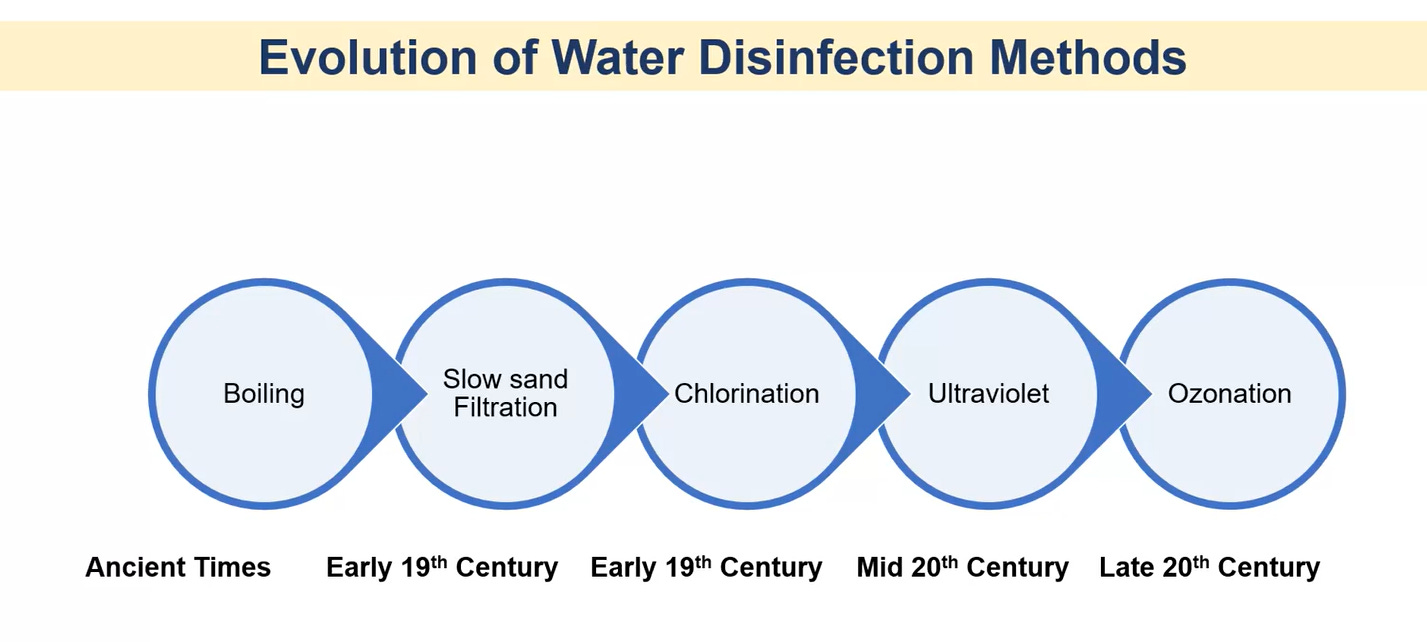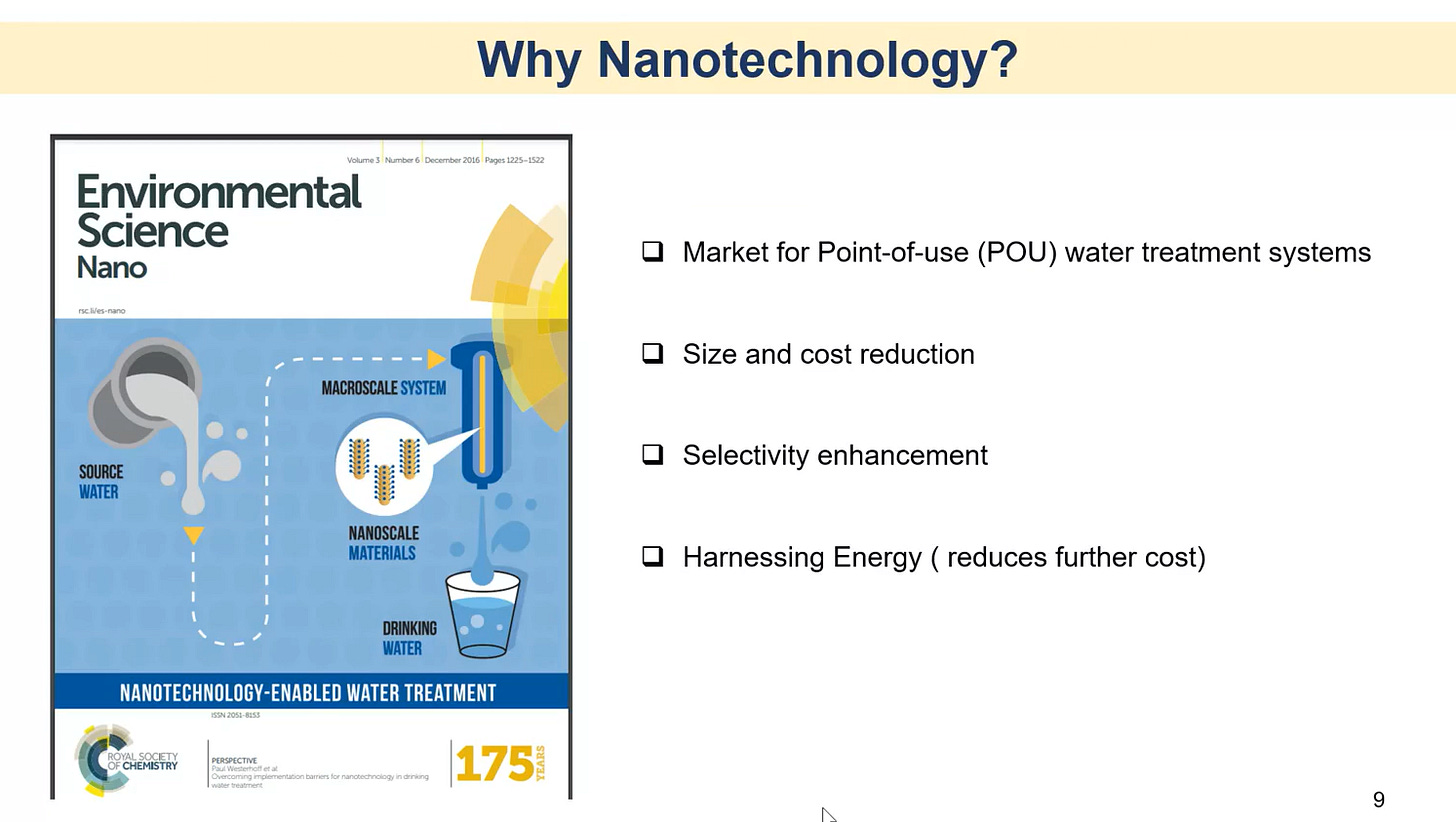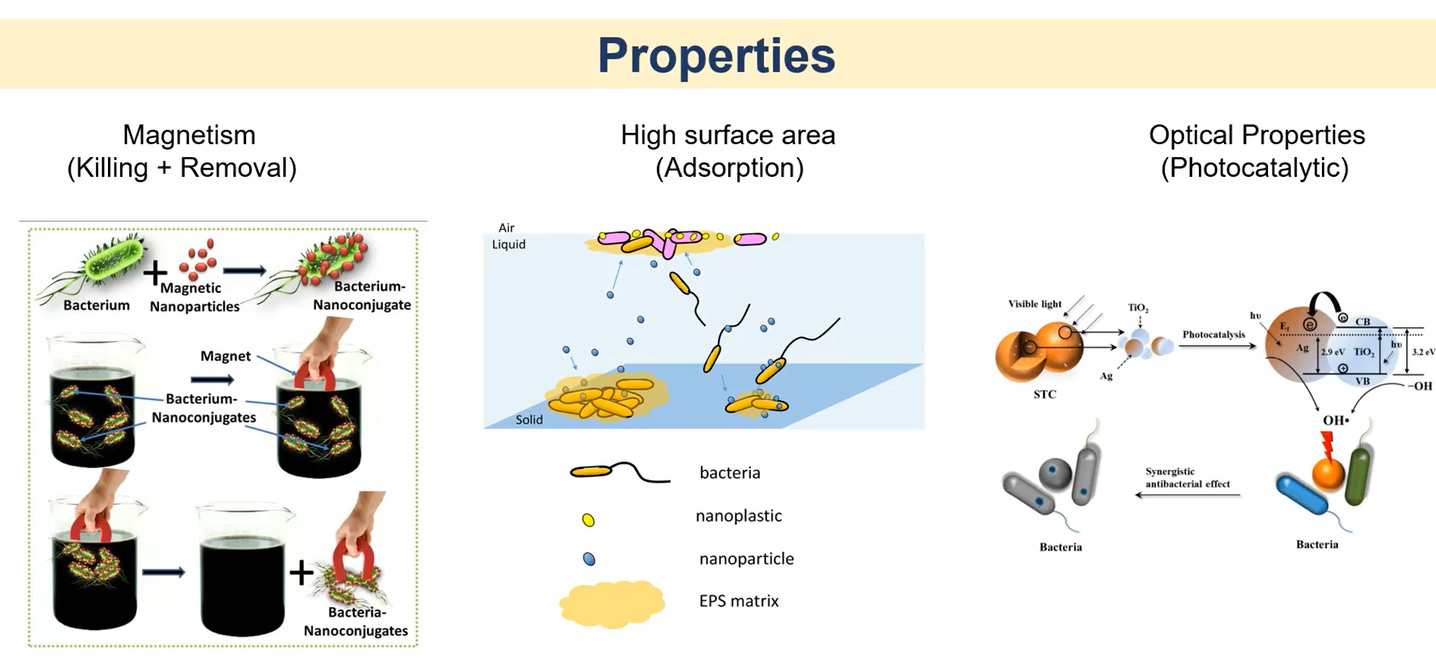Think. Research. Solve.
Integrating research and practice in the water industry.
This is an example of how dynamic people can be in countries where there’s a genuine will to do better.
These are the kinds of messages and interactions that make my work valuable and keep me going.
I am revisiting and repurposing top content from 2024, this time with context, commentary, and key takeaways.
Whether you’re catching up or rewatching, think of this as your curated highlight of the year that was.
We need more professionals like Nandini, people who take that extra step, are self-motivated, driven by passion, and willing to share their work and vision with the world in their field of expertise.
There is so much talent that remains only partially tapped, never reaching its full potential, within corporate and other entities.
I would like to unlock that potential that many of you probably have and is not being “used” for the benefit of our industry.
Nandini Dixit is a PhD scholar currently pursuing her doctorate in the Environmental Science and Engineering Department at the Indian Institute of Technology, Bombay, India.
She has been involved in the environmental science and engineering program for five years, building on a background in chemistry and a master's program in environmental science, now specializing in water disinfection.
She views her field as interdisciplinary, which she believes is crucial for solving complex problems.
Nandini believes that nanotechnology is the future of water disinfection because it addresses many of the limitations and challenges associated with conventional disinfection methods and offers innovative solutions.
Limitations of conventional disinfection methods:
Chlorine-based disinfection can lead to the formation of disinfection byproducts (DBPs), such as trihalomethanes (THMs), which are carcinogenic and toxic. Excessive chlorination can also result in a bad taste and smell in water, corrode pipes, and lead to the leaching of heavy metals.
Ultraviolet (UV) disinfection is energy-intensive and does not provide a residual effect to protect water during distribution. Microbes can also develop shielding mechanisms against UV light, reducing its effectiveness.
Ozonation is a powerful oxidizer, but it has a very short lifetime (7-10 minutes), meaning it cannot provide a residual effect. Like UV, it is energy-intensive, requiring high voltage, and can lead to side reactions that corrode the system and form DBPs, especially in the presence of organic matter. There's also a possibility of microorganism regrowth after ozonation due to its short residual time.
General challenges: Poor sanitation, hygiene, and sewage discharge lead to water contamination by human life-threatening microorganisms. The rise of antibiotic resistance in microbes makes traditional treatments less effective. Additionally, issues like biofilm formation in pipelines and the need for sustainable, affordable solutions in remote or rural areas highlight the need for innovation
Advantages of Nanotechnology in water disinfection
Miniaturization and cost reduction: Nanomaterials are extremely small (1 to 100 nanometers), allowing for the creation of portable, point-of-use water treatment systems that can reduce both system and operational costs.
High reactivity and selectivity: Due to their small size, nanomaterials have an exceptionally high surface area, offering ample space for reactions with microbes and contaminants. Their properties can be tuned or chemically modified to enhance selectivity for specific pollutants or contaminants.
Diverse mechanisms of action
▪ Magnetic properties: Nanomaterials can be engineered with magnetic properties (e.g., iron oxide nanoparticles) to produce oxidants that disrupt microbial defense systems. After use, these nanoparticle-bacteria conjugates can be removed from water using a magnetic field, preventing secondary contamination.
▪ Antimicrobial coatings for membranes: Nanomaterials can be used to coat or graft membranes (e.g., with silver or copper nanoparticles) to prevent biofouling and simultaneously kill microbes upon contact, improving filtration efficiency and membrane longevity.
▪ Photocatalytic properties: Certain nanoparticles (e.g., titanium dioxide, zinc oxide) act as catalysts when exposed to light, particularly solar energy. They produce highly reactive oxidants (like hydroxyl radicals) that disrupt cellular metabolism of microbes. This enables sustainable, off-grid water purification; examples include "solar bags" with embedded photocatalysts.
▪ Electrochemical disinfection: Nanomaterials can be used as efficient electrodes that, with the application of very low voltages (e.g., 1 volt), can generate a powerful electric field. This electric field causes electroporation, damaging the cell membranes of microbes and inactivating them.
▪ Graphene nanomaterials: Laser-induced graphene (LIG), which can be rapidly produced from various carbonaceous substrates, exhibits anti-biofouling activity due to its fibrous morphology that prevents microbial adhesion. When combined with electricity or doped with other nanoparticles (e.g., copper), LIG also demonstrates strong antibacterial and antiviral properties.
◦ Controlled release systems: Nanomaterials can be incorporated into tablets or coatings (e.g., N-halamine agents) to control the slow release of antimicrobial agents or enable contact-based disinfection, reducing the overall amount of chemicals introduced into the water. This prevents over-dosing and minimizes DBP formation.
◦ Addressing antibiotic resistance: Nanomaterials offer novel ways to interact with and inactivate microbes, potentially overcoming developed resistance mechanisms.
Despite the immense potential, Nandini acknowledges that the commercialization and large-scale implementation (remember our episode number 61) of nanotechnology in water treatment remain significant challenges.
Regulatory compliance for nanomaterials is also less strict, and there is a need for better, more affordable analytical techniques to detect and control their presence in treated water and the environment.
Disinfection, when did it start?
The story of disinfection's beginnings is closely linked to Dr. John Snow during the 1845 cholera outbreak in London.
Actually, not the John Snow you are thinking of…
Cholera, an acute diarrheal disease, was an epidemic that caused widespread deaths, with the microbe (Vibrio cholera) transported via ship bilge water to surface water and then into water supply systems.
Dr. Snow, a physicist, became curious about the outbreak's cause.
He observed that a hand pump on the streets of Soho, London, was the main water source for the local population.
Dr. Snow famously removed the handle of this hand pump.
Following this action, he observed a decrease in the number of deaths.
This led him to conclude that the major source of contamination was the surface water supplies.
Dr. Snow's analysis reinforced the importance of sanitation goals, leading to the establishment of sewer systems and the recognition of water purification as a need for cities.
This event marked the starting point for understanding the importance of clean water, sanitation, and hygiene for public health.
Less than 150 years ago… can you imagine what might happen in the next 30 years?
Chlorine byproducts
When I recorded episode #3 with Oxfam, I found myself hesitating about some of the points mentioned.
Considering our guest to be world-class in his field, I thought, Why would he say that?
Not being a chemical engineer, I had always assumed water was simply perfect. It had never crossed my mind that the water I drink could be filtering through my body while potentially leaving some long-term risks behind.
But Andy Bastable, head of WASH at Oxfam, mentioned about the byproducts of chlorine disinfection.
That’s when I realized: there is no perfect solution. This is exactly why we must keep improving, researching, and innovating.
As usual, this topic is multifactorial, and the advantages probably outweigh the risks thousands of times over, but it’s still worth understanding the technical aspects
The primary mechanism leading to the formation of these dangerous byproducts is the reaction of chlorine with organic matter present in the water.
◦ Before disinfection, extensive pre-treatment is necessary to reduce organic matter, as the presence of organic matter allows chlorine to react and form DBPs.
◦ Organic materials in source water can react with disinfectants to form DBPs, making their removal prior to prechlorination important.
◦ Precursors to DBPs: Substances used in pre-treatment, like activated carbon (a widely used precursor for pre-treatment), can themselves become precursors for DBPs because they contain carbon.
◦ Specific DBPs: The two main groups of regulated DBPs are trihalomethanes (THMs) and haloacetic acids (HAAs). The reduction of these two groups serves as an indicator for the reduction of overall DBPs.
In essence, while chlorine is effective at killing disease-causing microorganisms, its tendency to react with organic matter to form harmful, often carcinogenic, byproducts poses “certain” public health challenge that necessitates careful regulation and alternative disinfection strategies maybe on the long-term.
The importance of research
During 2025, you’ll receive two essays and episodes related to two cases born from this research background.
These cases have grown into promising major players in the water tech space.
We will explore firsthand the challenges they face in commercialization, how they got started, and the main struggles along the way, while also highlighting the unique value they bring compared to existing competitors.
Research in WASH? Yes!
Just to complement, our episode with Anvesh Badamikar, a WASH (Water, Sanitation, and Hygiene) researcher at Stanford University.
His current work focuses on a "wash in schools project" in Northern India, specifically in Uttar Pradesh.
This project is structured as a randomized control trial across 200 schools.
The core purpose is to test the impact of combined education and infrastructure interventions on the health behaviors of primary school children.
The primary goal of studying successful systems is to learn lessons that can be applied to future WASH service delivery to make it more sustainable.
He emphasized that the WASH system should not be treated as a separate entity, but rather as an integral part of a larger "political economy" encompassing cultural, social, and political systems.
Make a mental note of this.
Research in water is a continuous, interdisciplinary, and critical endeavor for global public health and environmental sustainability.
The professionals working behind the scenes are authentic heroes who sometimes don’t get the main spotlight, but they truly deserve a recognized place to openly share their experiences, findings, and feelings.
It continuously innovates to overcome limitations of current treatments and addresses evolving threats like disinfection byproducts, microbial resistance, and climate change impacts, ensuring the provision of safe and affordable water for current and future generations.
Next week we’re back…forever
After a summer break spent organizing new episodes, researching topics, making a bunch of calls, and managing time expectations, we are finally back next Sunday!
We will share all the updates you've been waiting for.
A business school that promotes continuous learning will remain relevant forever, increasing its value day after day. Exciting things are coming up!







